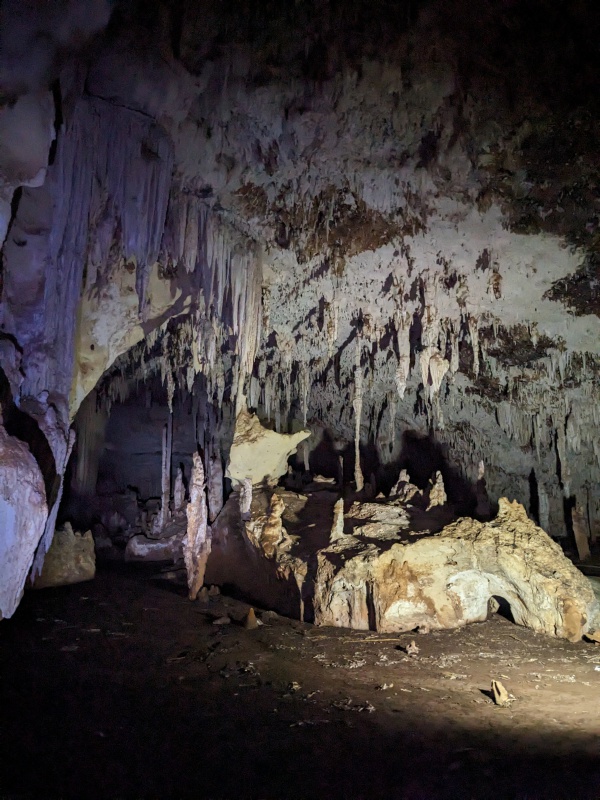Difference between revisions of "Anjohibe"
(→Guides: Added guide contact info) (Tags: Mobile edit, Mobile web edit) |
(Tags: Mobile edit, Mobile web edit) |
||
| Line 2: | Line 2: | ||
Anjohibe can be translated to 'big caves' and was first discovered in the 17th century. The cave contains three levels with the highest level being easily accessible without specialist equipment. Remarkably, there are still many historically significant artifacts in the cave including fossils, colonial-era tools and skeletons despite the artifacts being unfixed and vulnerable to thieves. | Anjohibe can be translated to 'big caves' and was first discovered in the 17th century. The cave contains three levels with the highest level being easily accessible without specialist equipment. Remarkably, there are still many historically significant artifacts in the cave including fossils, colonial-era tools and skeletons despite the artifacts being unfixed and vulnerable to thieves. | ||
| + | |||
| + | [[File:anjohibe1.jpg|600px]] | ||
== Getting There == | == Getting There == | ||
Revision as of 17:57, 8 July 2023
Anjohibe is a cave system located about 80 kilometers west of Mahajanga. It is the second largest cave system in Africa and a historically sacred place for the Sakalava people.
Anjohibe can be translated to 'big caves' and was first discovered in the 17th century. The cave contains three levels with the highest level being easily accessible without specialist equipment. Remarkably, there are still many historically significant artifacts in the cave including fossils, colonial-era tools and skeletons despite the artifacts being unfixed and vulnerable to thieves.
Contents
Getting There
After leaving Mahajanga, almost all of the track is off-road with the possibility to get lost or stuck in muddy ground. During the rainy season from December to March it is not possible to reach the caves by land.
There are two gates operated by locals and the park entry fee is paid at the second. Since it is required to have a guide to visit the caves, your guide will be able to purchase the park entry ticket for you.
Fauna
At the Anjohibe site (including the forest immediately surrounding it) many different species are found including:
| Scientific name | English name | |
| Furcifer rhinoceratus | Rhinoceros chameleon | Endemic to dry forests of Madagascar. |
| Propithecus verreauxi coquereli' | Sifaka Lemur | Threatened species endemic to Madagascar. |
Guides
It is required to hire a guide to enter Anjohibe, and necessary if you want to stay safe and see all points of interest. It is easy to get lost and very difficult to find the historical artifacts without someone that knows the site.
Guide John
Tel: +261 (0)32 4583928 (WhatsApp) or +261 (0)33 1165681 or +261 (0)34 0355480
Email: rivojohn@yahoo.fr or guidejohnmajunga@gmail.com
Website: www.guidejohn.com
John has been working in tourism in Mahajanga for many years and is well respected in the area. He is very responsive by WhatsApp and contacting him directly can save about 100 euro compared to booking via an agency or hotel.
Accommodation
Eco Lodge de la Grotte
Tel: +261 (0)32 4583928 (WhatsApp) or +261 (0)33 1165681 or +261 (0)34 0355480
Email: rivojohn@yahoo.fr or guidejohnmajunga@gmail.com
Website: www.guidejohn.com
